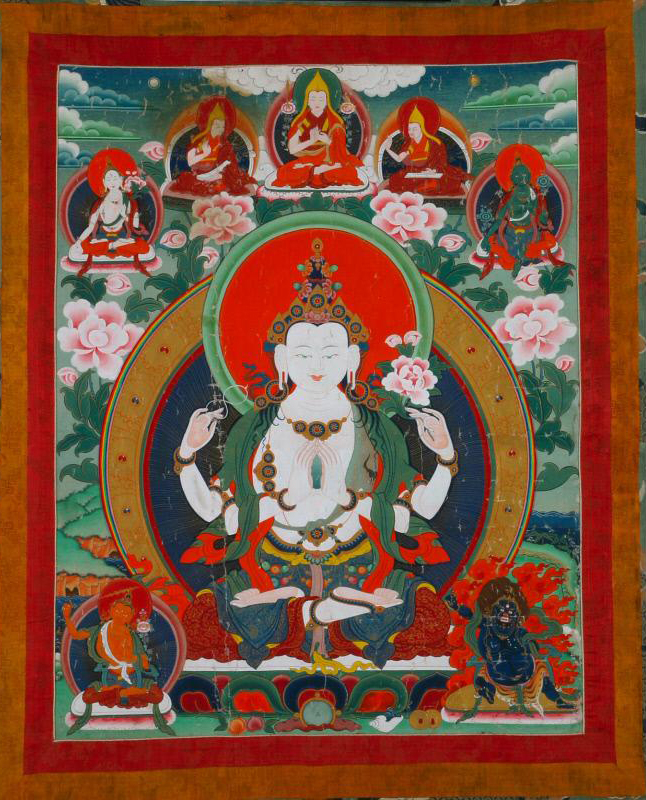Avalokiteśvara
Avalokiteśvara, also known as Guanyin (Chinese) or Kannon (Japanese), is the most renowned deity in Mahayana Buddhism. Avalokiteśvara is the Bodhisattva of Infinite Compassion and Mercy in Mahayana Buddhism.
Avalokiteśvara, often depicted as a compassionate figure, embodies qualities of active sympathy, compassion, and soft attachment. Translated as "The Lord Who Looks Down in Pity" or "The One Who Hears the Cries of the World," Avalokiteśvara represents the embodiment of compassion and mercy. Avalokiteśvara is not an ordinary Bodhisattva. In the past, when he became a Buddha, he was called "True Dharma Minh Tathagata".
Avalokiteśvara serves as both a companion and an earthly form of Amitabha, the Buddha of Infinite Light. During the transitional period between the historical Buddha Gautama and the future Buddha Maitreya, Avalokiteśvara watches over the world, representing Amitabha's power and influence. Additionally, Avalokiteśvara is credited with the creation of the actual living universe, the fourth world.
Avalokiteśvara can be represented as male, female, or genderless in various works of art. The most popular image is the embodiment of a woman, holding a vase of willows and using holy water peels to relieve the suffering of sentient beings. In Pure Land Buddhism, Avalokiteśvara, along with Amitabha and Mahāsthāmaprāpta, forms a ruling triumvirate for practitioners. In Tibetan Buddhism, Avalokiteśvara is known as Chenrezig, and there is a belief that the Dalai Lama is an incarnation of Avalokiteśvara.
Avalokiteśvara, the compassionate Bodhisattva, holds immense significance in Mahayana Buddhism. Known by different names across various cultures, Avalokiteśvara symbolizes compassion, actively sympathizes with others, and demonstrates infinite mercy. Exploring the symbolism and role of Avalokiteśvara offers a deeper understanding of this revered deity in Buddhist traditions.









